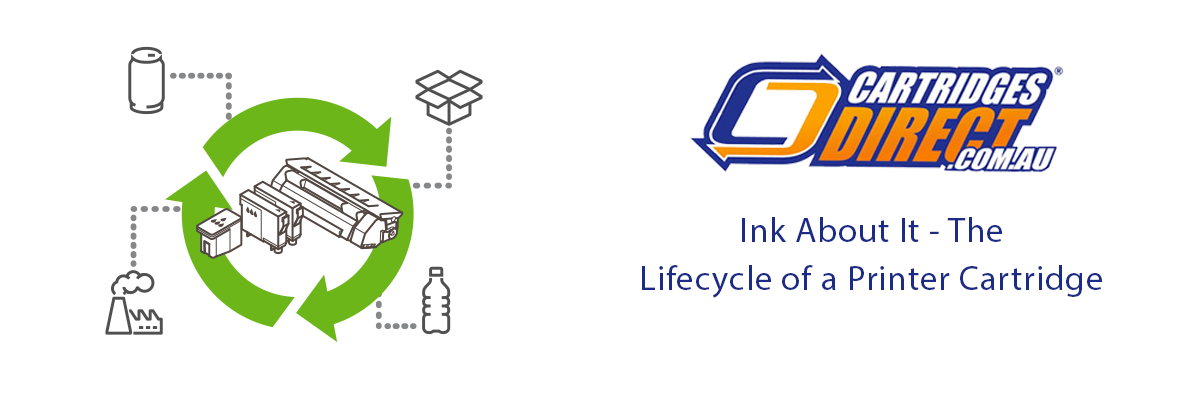Ink About It - The Lifecycle of a Printer Cartridge
From production to destruction, the typical lifecycle of an ink cartridge is an interesting one. With twists and turns of recycling and reuse, an ink cartridge can live many different lives. Because they are comprised of a variety of uniquely combined materials, ink cartridges can be difficult to recycle effectively, but by deeply examining the production process, it will become clear that there are ways to improve sustainability.
Complications in Disguise
Your average ink cartridge may look like a plastic box, but it’s comprised of several complicated parts. There are two major parts that form the whole - the main ink cartridge compartment, and the printhead. Not all ink cartridges have a printhead - sometimes the printhead will come with the printer, and those aren’t replaced as frequently as ink cartridges.
The plastic on the outside hides complicated microscopic inner workings, and great feats of chemical engineering. Thermal mechanics, involving metal plates and carbon-coated resistors, are used to eject ink droplets from the printhead onto paper.
Magnetising Metals
The metal plates used in ink cartridges tend to be a form of steel, comprised of dozens of raw materials and metals, including iron, coal, manganese, silicon, tin, nickel, chromium, and zinc. Some HP cartridges also include gold and palladium. These plates are bonded together in the manufacturing process to form the printhead. So recycling an ink cartridge isn’t as simple as it seems - with all these different materials bonded together, they have to be separated properly before they can be reused.
Cartridges Direct partners with Planet Ark and Close The Loop to recycle printer cartridges. For the cartridges that won’t simply be returned, refilled, and reused, machinery has been specially designed to break the ink cartridge down into its microscopic raw materials. Magnets are used to separate the iron-based metals from the other compounds, and eddie currents can separate other metals such as aluminium.
Processing Plastic
A synthetic rubber foam contains the ink in the ink compartment of the cartridge, and it is hydrophobic to prevent water from interfering with the ink. The ink cartridge is encased in plastic, and other plastic parts are included in the inner workings. As part of the recycling process, these plastics are broken up and divided according to their type, so that they can be melted down and reused appropriately.
A multitude of technologies have been developed just to break a whole ink cartridge down into the raw materials it was built from. Having been separated, these raw materials can go right back into the production line for more ink cartridges, or be used to produce other products.
While taking into account all the materials used in the ink cartridge itself, it’s also important to think about the machinery doing the manufacturing. Steel is common in these machines, and coal is the most common power source for the production line. So, even while ethically recycling and reusing printer cartridges, the opportunity for poor sustainability exists
Explore Popular Articles
-
How to Set Up A Home Office: A Definitive Checklist
19th Aug 2025With the rise of the digital age, more professionals every year are taking the opportunity to work f
-
The Hidden Costs of Home & Office Printing – And How to Cut Them in Half
4th Jul 2025From buying paper to topping up your ink cartridges, maintaining home or office printers can come wi
-
CartridgesDirect Celebrates 50,000 Recycled Ink Cartridges, Saving An Estimated 130 Turtles
30th Apr 2025Do you know how many recycled ink cartridges it takes to save a turtle? Well, it’s not the easiest q




